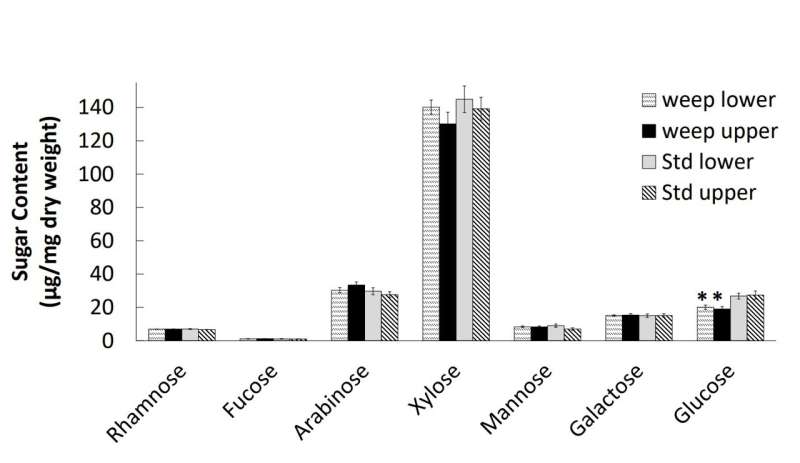This article has been reviewed according to Science X's editorial process and policies. Editors have highlighted the following attributes while ensuring the content's credibility:
fact-checked
trusted source
proofread
Researchers decipher mysterious growth habit of weeping peach trees

A basic premise of how plants grow is that shoots grow up and roots grow down. A new study, published in Plant Physiology, reveals the answer to a fascinating question: why do weeping tree varieties defy this natural growth pattern?
Researchers identified a protein called WEEP that is missing from the Weeping Peach Tree. Their results show how a DNA deletion in just one gene completely changes the localization of the hormone auxin, which then leads to shoots intentionally growing downwards, like roots.
"It brings a new piece to the puzzle of how auxin gradients can be created," noted Dr. Courtney Hollender, corresponding author of "Defying Gravity: WEEP promotes negative gravitropism in peach trees by establishing asymmetric auxin gradients." "We were excited and surprised to find something new involving a gene that is in all plants, but was not picked up from Arabidopsis research."
Compared to standard peach branches, the weeping peach branches have a flipped auxin distribution at their shoot tips. A greater expression of auxin-responsive genes in the upper tissues of a weeping shoot tip—rather than the tissues in the lower side—implies the downward growth of weeping branches is due to greater auxin concentrations on the upper side of shoot tips.
"By identifying mechanisms associated with how trees predetermine and regulate branch orientation, I am hoping to develop new breeding strategies and cultural practices that would enable fruit trees to easily and affordably be grown close together and in narrow rows to generate fruiting walls," said Hollender, who is studying weeping peach trees as part of an effort to optimize orchard management and tree fruit production.
"Our research highlights how a small change in a plant can have such a big impact."
More information: Andrea R Kohler et al, Defying Gravity: WEEP promotes negative gravitropism in peach trees by establishing asymmetric auxin gradients, Plant Physiology (2024). DOI: 10.1093/plphys/kiae085
Provided by American Society of Plant Biologists





















